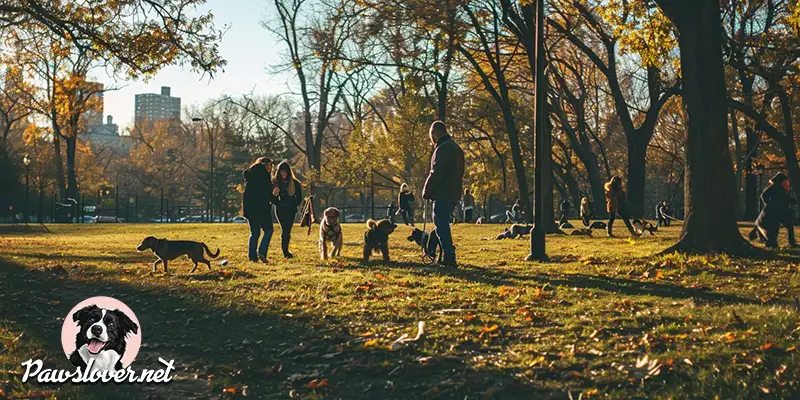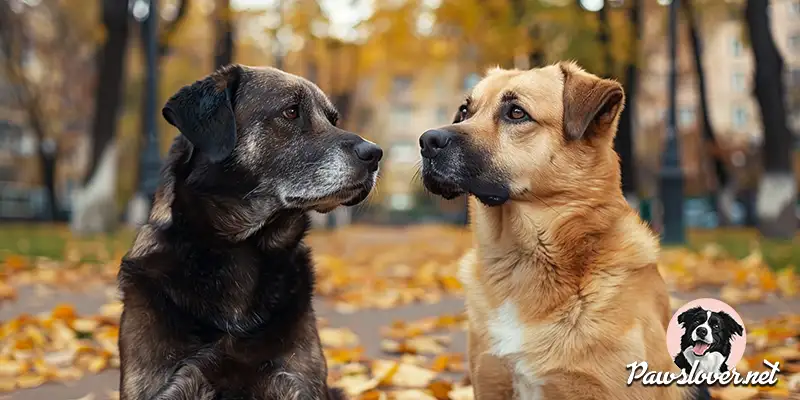Socializing your dog is an essential part of responsible pet ownership. It helps your dog develop confidence, reduces anxiety, and improves overall behavior. One of the best places to socialize your dog is in a park, where they can meet other dogs and people in a controlled, natural environment. This comprehensive guide will provide you with tips and strategies to help your dog socialize effectively with friends in a park.
Understanding the Importance of Socialization
Mental Stimulation: Socializing your dog provides mental stimulation, which is crucial for their overall well-being. Interacting with other dogs and people keeps your dog’s mind active and engaged.
Behavioral Benefits: Well-socialized dogs are generally better behaved. They are less likely to develop aggressive tendencies and are more adaptable to new environments and situations.
Reduced Anxiety: Socialization can significantly reduce anxiety and fear in dogs. Exposure to different stimuli helps them become more confident and less fearful of the unknown.
Stronger Bond: Socializing your dog can strengthen the bond between you and your pet. It provides opportunities for positive interactions and shared experiences.
Preparing for Socialization
Health Check: Before socializing your dog, ensure they are healthy and up-to-date on vaccinations. This protects both your dog and others they may encounter.
Basic Training: Basic obedience training is essential. Commands like sit, stay, come, and leave it can help you control your dog in social situations.
Understand Your Dog’s Temperament: Every dog is different. Some dogs are naturally more social, while others may be more reserved. Understanding your dog’s personality can help you tailor your approach to socialization.
Choose the Right Time: Parks can be busy places. Choose a time when the park is less crowded, especially during the initial stages of socialization. This can help prevent your dog from feeling overwhelmed.

Gradual Exposure
Start Slowly: Begin by taking your dog to the park on a leash. Allow them to observe other dogs and people from a distance. Gradually decrease the distance over time as your dog becomes more comfortable.
Short Sessions: Keep initial socialization sessions short. As your dog becomes more accustomed to the park environment, you can gradually increase the length of your visits.
Positive Reinforcement: Use treats and praise to reward your dog for calm and positive behavior. This helps them associate socialization with positive experiences.
Observe Body Language: Pay close attention to your dog’s body language. Signs of stress or discomfort include tail tucking, lip licking, yawning, and avoiding eye contact. If your dog shows these signs, it may be time to take a break.
Interacting with Other Dogs
Proper Introductions: When introducing your dog to another dog, choose a neutral area. Allow the dogs to sniff each other while keeping them on a leash. If both dogs appear relaxed, you can let them interact off-leash in a safe, enclosed area.
Supervise Interactions: Always supervise interactions between dogs. Be prepared to intervene if play becomes too rough or if either dog shows signs of aggression.
Encourage Play: Encourage positive play behaviors such as chasing, fetching, and gentle wrestling. Discourage any aggressive or overly rough behavior immediately.
Know When to Step In: If you notice signs of aggression or discomfort, separate the dogs and give them a break. It’s important to ensure that socialization remains a positive experience for both dogs.
Socializing with People
Friendly Approach: Teach your dog to approach people calmly. Avoid allowing your dog to jump on others. Use commands like sit or stay to keep your dog under control during greetings.
Positive Associations: Encourage friends to offer treats and praise to your dog. This helps your dog associate people with positive experiences.
Respect Boundaries: Not everyone may be comfortable around dogs. Teach your dog to respect personal space and not to approach people without permission.
Introduce Different People: Expose your dog to a variety of people, including children, adults, and elderly individuals. This helps them become comfortable with different types of people.

Using Dog Parks
Choosing a Dog Park: Select a dog park that is well-maintained and has a good reputation. Look for parks with separate areas for small and large dogs to ensure the safety of all pets.
Park Rules: Familiarize yourself with the rules of the dog park. Follow all guidelines, including cleaning up after your dog and monitoring their behavior.
Entering the Park: When entering the dog park, keep your dog on a leash until you are inside the designated off-leash area. Allow your dog to adjust to the new environment before unleashing them.
Monitoring Play: Keep a close eye on your dog while they play. Be aware of their interactions with other dogs and be ready to intervene if necessary.
Addressing Challenges
Overcoming Fear: If your dog is fearful of other dogs or people, start with controlled, low-pressure interactions. Gradually increase exposure and use positive reinforcement to build confidence.
Dealing with Aggression: If your dog shows signs of aggression, seek help from a professional trainer or behaviorist. They can provide guidance and strategies to address aggressive behavior.
Handling Overexcitement: Some dogs may become overly excited in social situations. Use commands and training techniques to help calm your dog and manage their excitement.
Recognizing Triggers: Identify and avoid potential triggers that may cause anxiety or aggression in your dog. This can include certain types of dogs, loud noises, or unfamiliar environments.
Long-Term Socialization Strategies
Regular Visits: Consistency is key to successful socialization. Make regular visits to the park and other social environments to maintain your dog’s social skills.
Variety of Experiences: Expose your dog to different environments, such as pet-friendly stores, outdoor cafes, and hiking trails. This helps them become adaptable and well-rounded.
Ongoing Training: Continue with obedience training and reinforce positive behaviors. Ongoing training helps maintain control and ensures your dog remains well-behaved in social situations.
Building a Routine: Establish a routine that includes regular socialization opportunities. Dogs thrive on routine, and consistent socialization can help reduce anxiety and improve behavior.
Conclusion
Socializing your dog in a park with friends and other dogs can be a rewarding experience for both you and your pet. It promotes mental stimulation, reduces anxiety, and improves overall behavior. By understanding your dog’s temperament, gradually exposing them to new situations, and using positive reinforcement, you can help your dog become a well-socialized and happy member of the community. Remember, patience and consistency are key, and always prioritize your dog’s safety and well-being during socialization efforts.
With time, effort, and the right approach, you can help your dog develop the social skills they need to enjoy a happy, confident, and fulfilling life.